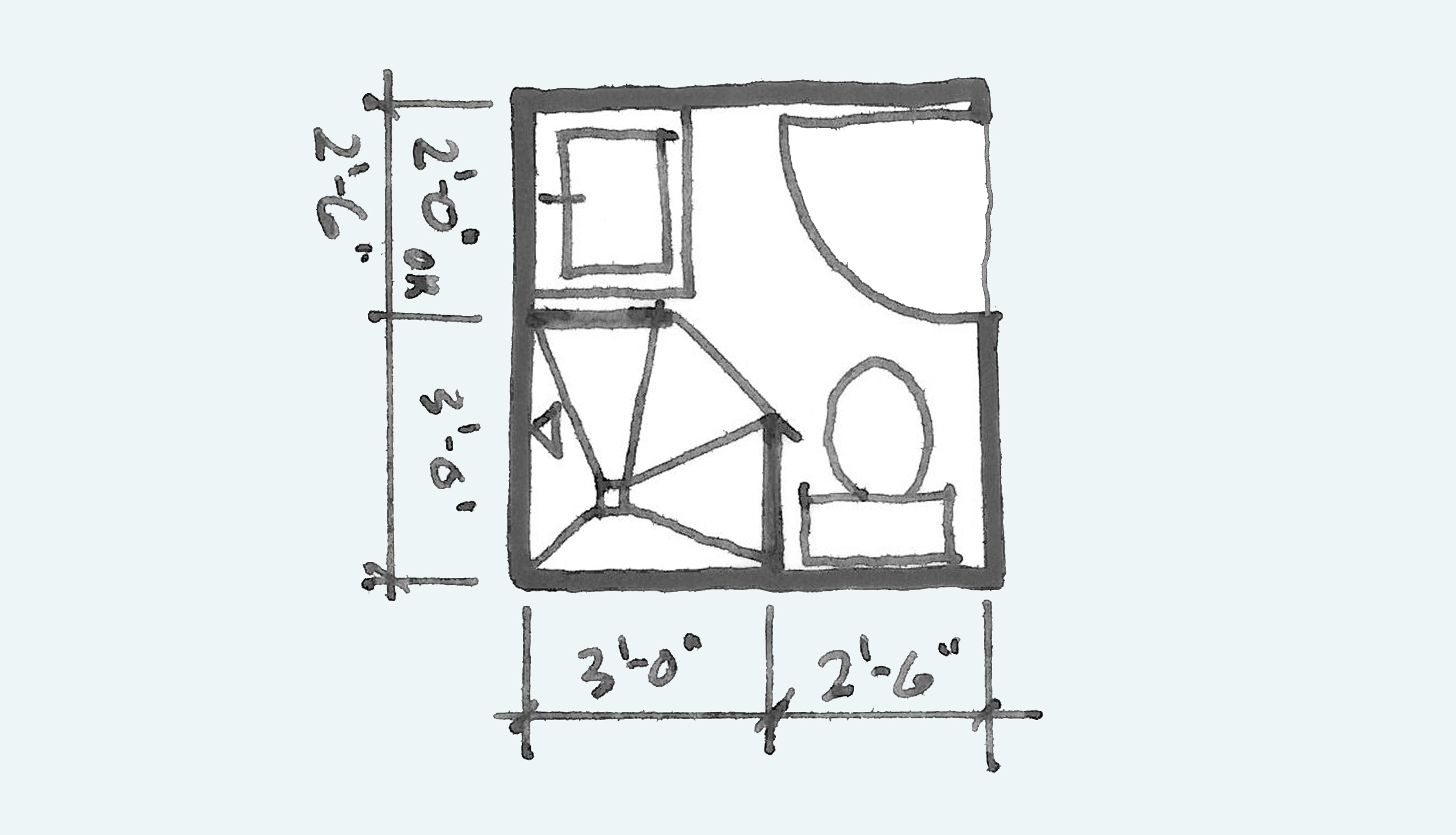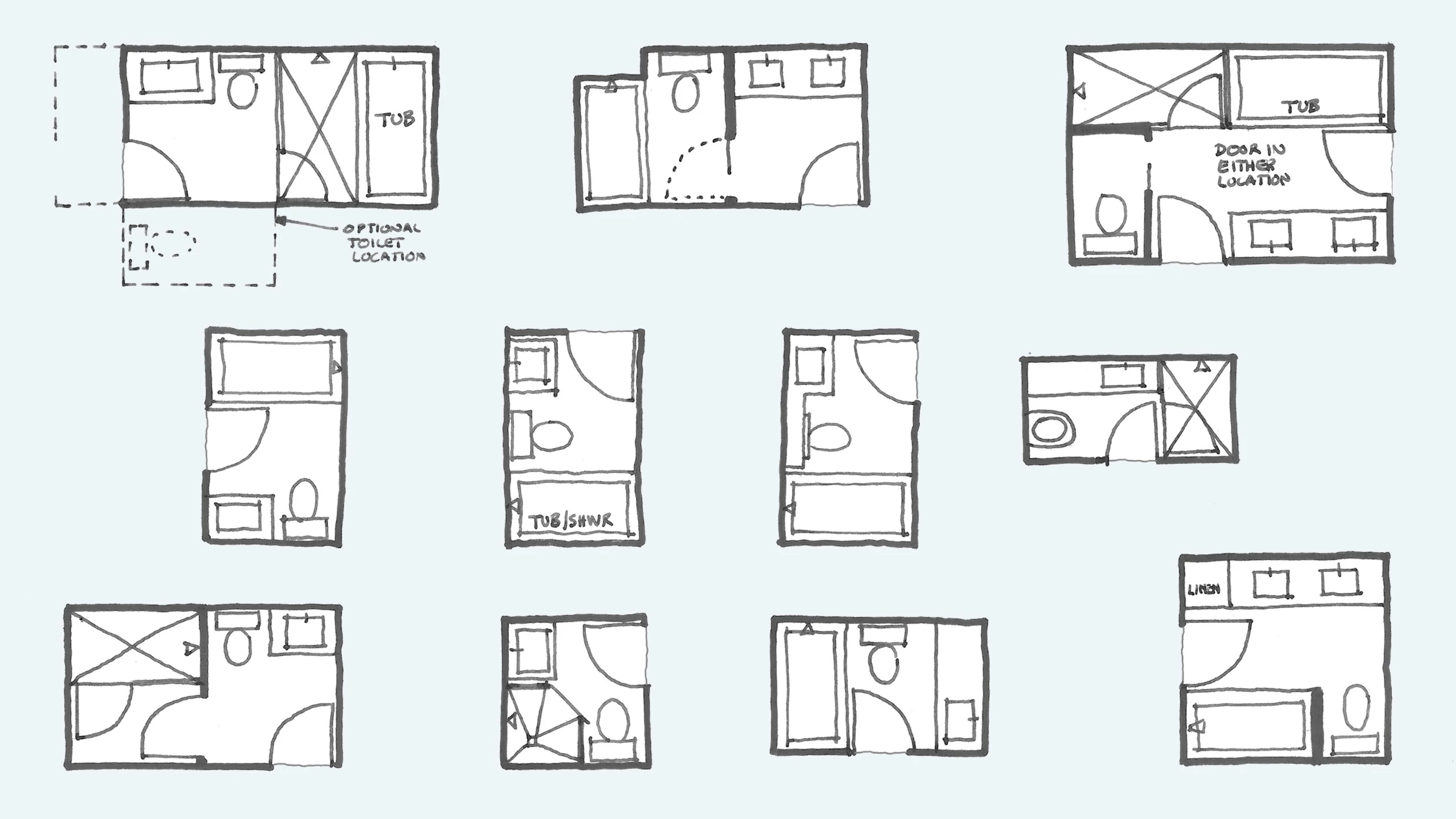Tiny House Bathroom Design Essentials

Designing a bathroom for a tiny house presents unique challenges, requiring careful planning and creative solutions to maximize functionality and comfort within a limited space. The key is to embrace clever design strategies that create a sense of spaciousness and efficiency, ensuring that every inch is used effectively.
Creating a Spacious Feel
Creating a spacious feel in a tiny house bathroom is paramount. Light colors reflect light, making the space appear larger. Maximizing vertical space with shelves, cabinets, and mirrors, helps to keep the floor clear and reduces clutter.
- Light Colors: Opt for light-colored walls, floors, and fixtures. White, beige, and light grays create a sense of openness and airiness.
- Vertical Space: Utilize vertical space with tall cabinets, shelves, and mirrors to maximize storage and minimize floor space.
- Clever Storage Solutions: Integrate storage solutions that maximize space, such as built-in shelves, drawers under the sink, and wall-mounted organizers.
Bathroom Fixtures and Appliances
Choosing the right bathroom fixtures and appliances is crucial for a tiny house bathroom. Compact and efficient options are essential to conserve space without compromising functionality.
- Compact Toilets: Consider space-saving toilets, such as dual-flush or composting toilets, which use less water and are smaller in size.
- Small Sinks: Opt for small, vessel sinks or wall-mounted sinks that minimize countertop space.
- Shower Stalls: Utilize a shower stall instead of a bathtub to save valuable floor space.
- Low-Flow Showerheads: Install low-flow showerheads to conserve water without sacrificing shower experience.
- Compact Vanities: Choose compact vanities with integrated storage solutions to maximize space and functionality.
Popular Tiny House Bathroom Floor Plan Layouts

Tiny house bathroom floor plans are a fascinating blend of functionality and creative space optimization. The limited square footage demands a thoughtful approach to design, often leading to clever layouts that maximize every inch. These layouts prioritize efficiency while maintaining a comfortable and stylish bathroom experience.
Single-Room Layouts, Tiny house bathroom floor plan
Single-room layouts are the most common in tiny houses, where all bathroom elements – toilet, sink, and shower – are contained within a single space. This approach offers a sense of unity and allows for a more cohesive design.
- Pros: Single-room layouts are ideal for maximizing space, as they eliminate unnecessary walls and corridors. This makes them suitable for smaller tiny houses. They also provide a sense of openness and visual continuity. The unified design allows for a cohesive aesthetic.
- Cons: The lack of separation between elements can lead to a feeling of claustrophobia, especially if the room is small. It also requires careful consideration of ventilation to prevent moisture buildup.
Combined Shower/Toilet Spaces
Combining the shower and toilet area is a popular space-saving technique in tiny house bathroom design. This approach eliminates the need for a separate shower stall, freeing up valuable floor space.
- Pros: Combining the shower and toilet creates a more compact layout, maximizing available space. This can be particularly beneficial in smaller tiny houses. It also eliminates the need for a separate shower stall, simplifying the design and construction process.
- Cons: This layout requires careful consideration of water drainage and ventilation to prevent moisture buildup and mold growth. The proximity of the toilet and shower may also pose challenges in terms of privacy and hygiene.
Wet Rooms
Wet rooms are a modern approach to bathroom design where the entire floor is waterproofed, eliminating the need for a separate shower stall. The floor is typically sloped towards a drain, allowing water to flow freely.
- Pros: Wet rooms offer a sleek and modern aesthetic, eliminating the need for a separate shower stall. The open floor plan can make the bathroom feel larger and more spacious. The waterproofed floor eliminates the risk of water damage.
- Cons: Wet rooms require extensive waterproofing and careful planning to ensure proper drainage. They may not be suitable for all tiny house layouts, particularly those with limited space.
Comparison of Bathroom Floor Plan Layouts
| Layout | Dimensions (sq ft) | Features | Suitability for Tiny Houses |
|---|---|---|---|
| Single-Room Layout | 25-40 sq ft | Toilet, sink, shower in one space | Suitable for most tiny houses |
| Combined Shower/Toilet | 15-30 sq ft | Shower and toilet in one area | Suitable for smaller tiny houses |
| Wet Room | 20-40 sq ft | Waterproofed floor, no shower stall | Suitable for larger tiny houses |
Maximizing Space and Functionality in Tiny House Bathrooms

Tiny house bathrooms, while compact, can be incredibly functional and stylish with clever design and smart storage solutions. By embracing multi-purpose fixtures, incorporating hidden storage, and implementing clever design solutions, you can create a bathroom that is both efficient and comfortable.
Ventilation and Lighting in Tiny House Bathrooms
Ventilation and lighting are crucial aspects of any bathroom, but they become even more important in a small space. Proper ventilation helps to prevent moisture buildup, which can lead to mold and mildew growth. Adequate lighting, on the other hand, ensures a bright and inviting space.
- Maximize Natural Light: Utilize windows to bring in natural light, brightening the space and creating a more spacious feel. Consider using skylights if possible to enhance natural light even further. Position mirrors strategically to reflect natural light and make the room appear larger.
- Implement Effective Ventilation: Install a powerful exhaust fan to remove moisture and odors quickly. Consider a fan with a timer to ensure it runs for a sufficient amount of time after use. Ensure the fan vents directly to the outside, not into the attic or other enclosed spaces.
- Use Energy-Efficient Lighting: Opt for LED lights, which are energy-efficient and last longer than traditional incandescent bulbs. Choose bulbs with a warm white color temperature to create a welcoming ambiance. Consider installing dimmer switches to adjust the brightness level according to your needs.
Creative and Efficient Storage Solutions
Storage is key in any tiny house bathroom, and creative solutions can maximize space and keep everything organized.
- Wall-Mounted Shelves: Utilize vertical space by installing wall-mounted shelves for storing towels, toiletries, and other bathroom essentials. Choose shelves in various sizes to accommodate different items and maximize storage capacity.
- Floating Vanities: Floating vanities offer a sleek and modern look while creating valuable storage space beneath the sink. Look for vanities with drawers and cabinets to store toiletries, towels, and other bathroom necessities.
- Under-Sink Storage: Maximize space under the sink by utilizing organizers and baskets to store cleaning supplies, extra toiletries, and other items. Choose organizers that fit the specific dimensions of your sink cabinet for optimal use of space.
- Over-the-Toilet Storage: Install an over-the-toilet shelf or cabinet to store towels, toiletries, or decorative items. This space is often overlooked but can provide valuable storage without taking up floor space.
Multi-Purpose Fixtures and Design Solutions
Multi-purpose fixtures and clever design solutions can help maximize functionality in a tiny house bathroom.
- Shower/Tub Combo: A shower/tub combo can save valuable space while offering both bathing and showering options. Choose a combo unit that is compact and efficient to optimize space.
- Compact Toilet: Opt for a compact toilet model that fits seamlessly into the space without compromising functionality. Consider a dual-flush toilet to save water and reduce your environmental impact.
- Foldable Shower Curtain: A foldable shower curtain can be tucked away when not in use, maximizing space and creating a more open feel. Choose a waterproof and mildew-resistant material for durability.
- Corner Shelves: Utilize corner space effectively by installing corner shelves for storing towels, toiletries, or decorative items. Corner shelves add visual interest and maximize storage potential.
